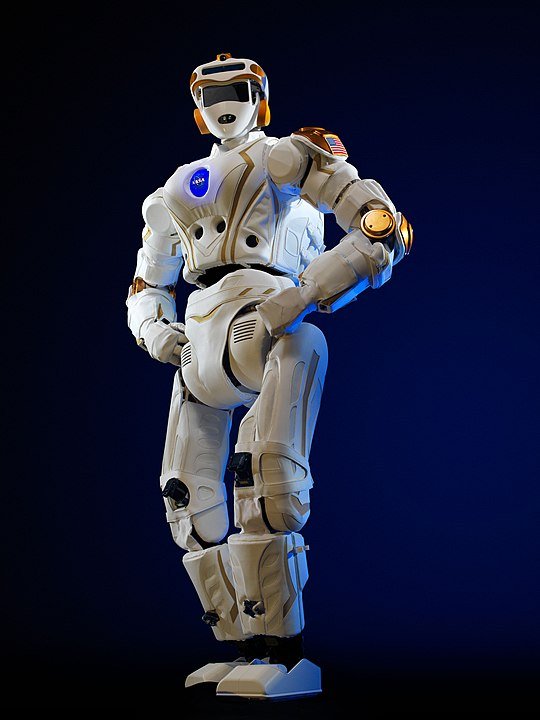Computers Doing the Job of Lawyers
Computers and robots are replacing people at more and more jobs. Computers can drive cars, arrange for travel, and even write music. Robots can build cars, sew clothes, and tend bar. But what about lawyers? Are computers coming to do their work, too? I don’t know for sure what the future holds and smarter people than me have taken their guesses, but there are several ways in which computers are doing their work already and some ways in which they may do more.
Why should you read this post about automation in the legal industry?
You want to know if it is too late to go to law school or if lawyer jobs will still exist in three years.
You have already read my two other posts about computers and the law: one about Electronic Filing and another about Frequently Used Software.
You are a Google bot that is automatically indexing this page for search engine results.
Image credit: https://en.wikipedia.org/wiki/Humanoid_robot#/media/File:Valkyrie-robot-3.jpg
Document Review
I start with one area where computers are already doing a lot of the work that people used to do exclusively.
A major element of litigation is document review: reading all of the correspondence, contracts, and other documents that a client has and that other parties have produced in an effort to find relevant evidence. I have written about this subject before. It used to be that junior associates would sit in a room with many boxes of documents, hold each one in their hands, and read it or mark it up.
Since email became more popular, however, the number of documents lawyers have had to review has skyrocketed, and so it has become less feasible to print documents and review them by hand. Instead, lawyers often read these documents on a computer screen. And the computer may be helpful in organizing the documents and searching through them. I have written about this process, too.
But over the past ten years, there has been a growing trend to let computers actually do the document review and leaving only a small portion of it to people. This process is called TAR, or technology assisted review. The way it usually works is that a human being reviews a portion of the documents and then a computer uses artificial intelligence to figure out from the sample which documents are relevant and which are not and then codes the remainder of the documents accordingly.
On the one hand, this process is much less expensive than hiring lawyers and paying them their hourly rates to review a warehouse full of documents. This is even true when lawyers outsource this work to part-time lawyers or lawyers in other countries, whose billing rates are often lower. And computers can be more reliable than people; they don’t get tired and they act consistently.
But this process is far from perfect for now. In my experience, the artificial intelligence system does not process the actual document requests that lawyers carefully draft and even litigate. It only processes how a lawyer coded a subset of documents. Therefore, the system may miss important categories of documents or nuances in the distinction between responsive and non-responsive documents.
Case Law Research
Another staple of litigation work is case law research. Lawyers used to do this work by poring over index books that directed them to other books. This process was tedious, especially since it required reviewing multiple books to find the law in a book and then to confirm the law in that book had not been overturned.
In the past several decades, lawyers have relied on computers that allow them to search through the law in a way that is similar to how a user uses a search engine. They can type in key words and view legal decisions that contain those key words and that have automated signals that state whether there are other legal decisions that have affirmed or overturned that decision. These services, like Lexis and Westlaw, are expensive, but they save a lot of time (which saves client costs) and are becoming less expensive than maintaining a large library of books that need to be regularly updated.
But some legal providers are developing artificially intelligent technology that can identify the relevant law for a case and cite it automatically. According to this article, one company has a tool that can scan a memorandum of law and then identify the cases that apply to its subject.
Advising Clients and Judging the Law
One area where technology has not replaced people is in providing advice to clients. While people often use search engines to get answers to basic legal questions, currently a lawyer does the best job of identifying potential legal issues, listening to a client’s needs, and providing practical advice on the law.
Part of this has to do with the fact that people are better at communicating with people than computers are. That may change as computers get better at communicating.
Another part has to do with the fact that different people view the law differently. One lawyer may see a winning case where another does not, and one judge may see a violation of the law where another does not. It is difficult for a computer to provide a reliable answer to a legal question when the people that write and interpret the law cannot provide one, either.
Another area where computers may not soon replace people in in judging the law. Our legal system entrusts the determination of various disputes to juries of regular people or to judges that come to power through a political system. Even if computers could replace people in these tasks, people may choose to keep power in the hands of other people.
